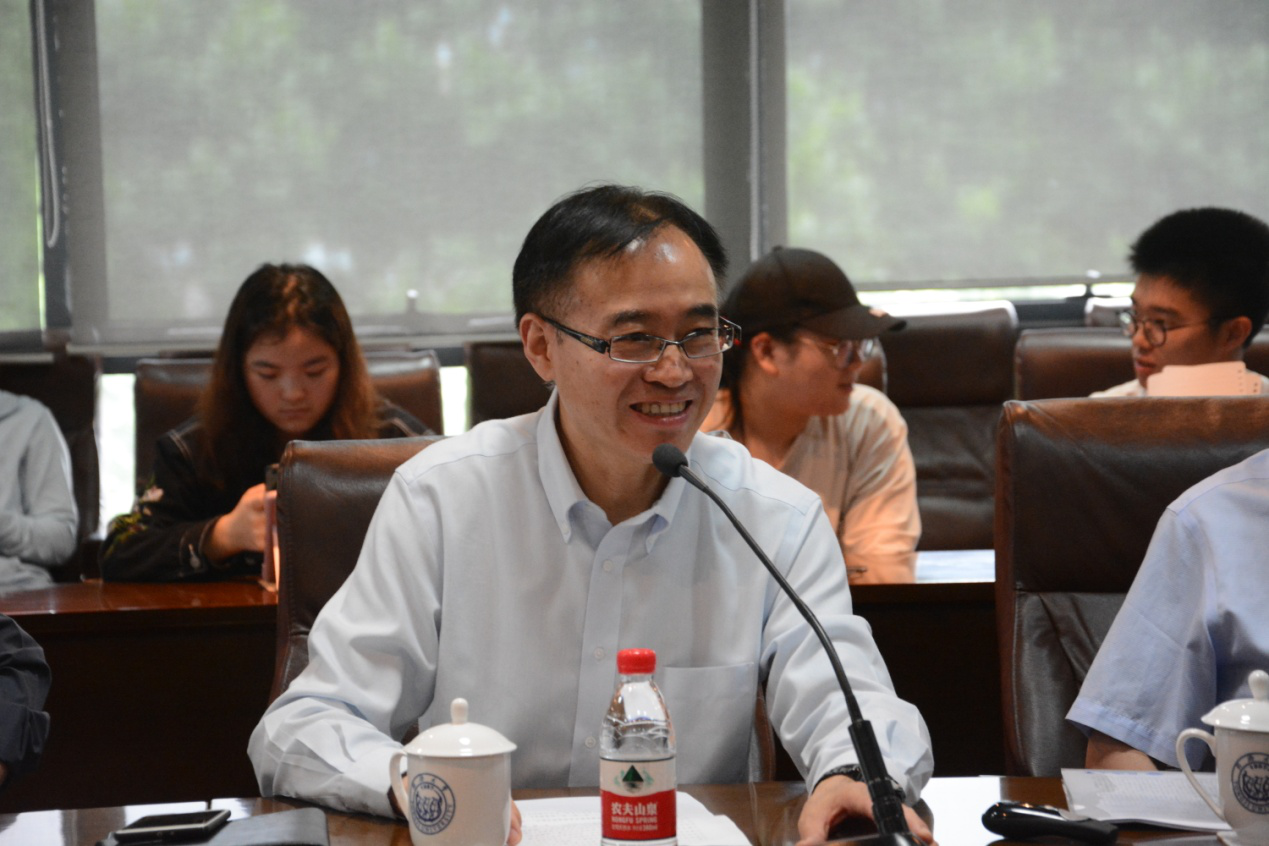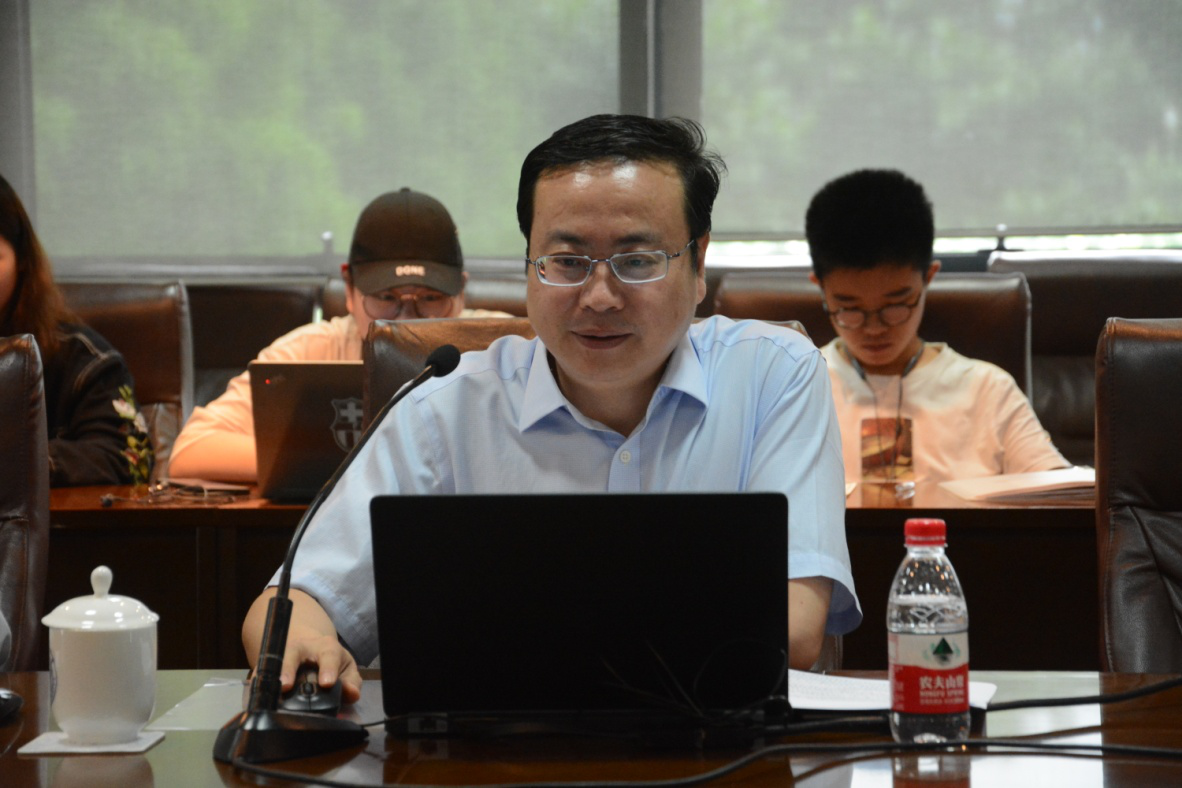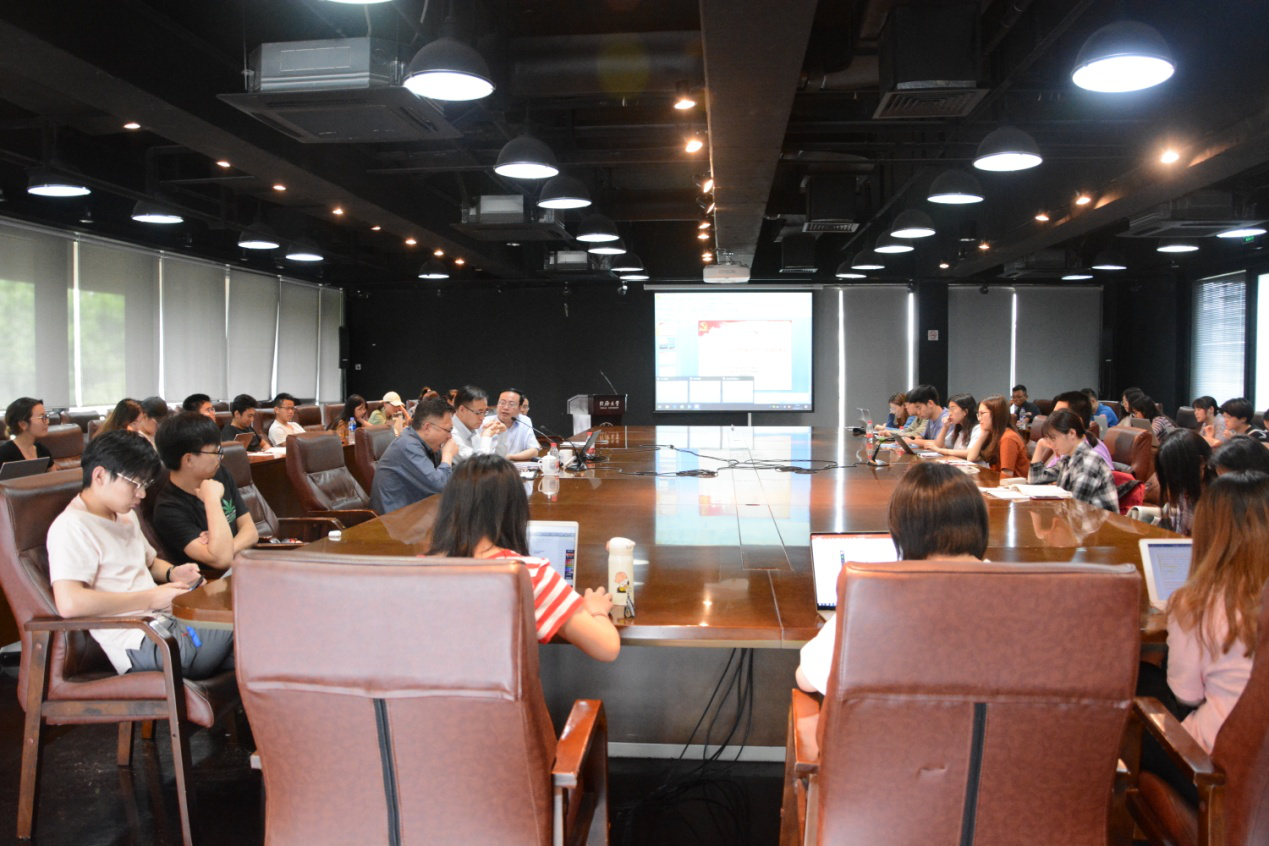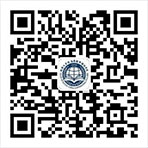
Toward High-Quality Belt and Road Cooperation
-- A lecture by Researcher Jin Xin
On June 13, 2019, the Tongji Serial Lectures on Social Sciences No.13 was held in Room C401 of the Sino-French Center, Siping Campus, Tongji University. Researcher Jin Xin, Secretary General of the Silk Road Think Tank Association (SRTA) and Director General of the China Center for Contemporary World Studies (CCCWS) of the International Department of the CPC Central Committee, was specially invited to give a keynote speech on the topic of “Toward High-Quality Belt and Road Cooperation” for teachers and students of Tongji. This lecture was moderated by Men Honghua, Tongji Distinguished Professor, President of the Institute for China & World Studies, and Dean of the School of Political Science & International Relations, Tongji University.

Since last year, there have been numerous augments about China’s Belt and Road Initiative (BRI) around the world. However, before the Belt and Road Forum for International Cooperation (BRF) was held, China was able to show the world the facts by digging and collecting a large number of stories and practices about the Belt and Road cooperation worldwide. Some views on the BRI may have reference significance because they are talking about specific practices; while domestic think tanks are generally focusing on the theoretical level. A desirable way is to combine theory with practice, Jin Xin noted.

Director Jin summarized the core spirit of the second BRF in four words:
The first is “joint”. A total of 40 leaders including the heads of state and government from 38 countries including China and the Secretary-General of the United Nations and the President of the International Monetary Fund (IMF) attended the Roundtable, and more than 6,000 foreign guests from political, business and academic communities from 150 countries and 92 international organizations attended the forum. They jointly discussed how to promote international cooperation, how to pursue common development, and how to effectively align the development plans of various countries and the relevant agendas of international organizations with the BRI.
The second is “clear”. A clear goal of promoting high-quality Belt and Road cooperation was set at the forum. High quality is the keyword for the next stage of Belt and Road cooperation, where innovative, green and clean cooperation will be pursued. The forum specifically proposed to "build a global partnership of connectivity" to achieve common development and prosperity. High-quality, sustainable, resilient, affordable, inclusive and accessible infrastructure projects will make the bedrock of connectivity more solid and the flow of goods, capital, technology and people more unimpeded.
The third is “practical”. China and its partner countries have signed a number of practical cooperation agreements, under which many functional cooperation platforms have been built up. China has signed more than 100 bilateral and multilateral cooperation documents with related countries and international organizations in such fields as transportation, tax, trade, audit, science and technology, culture, think tank and media. Some countries and international financial institutions have signed agreements with China on third-market cooperation. China took the lead in compiling a list of 283 results achieved so far.
The fourth is “heartwarming”. China will take a people-centered approach, and give priority to poverty alleviation and job creation to see that the joint pursuit of Belt and Road cooperation will deliver true benefits to the people of participating countries. Belt and Road cooperation focuses on not only the “hard connectivity” in economic cooperation and other areas, but also the “soft connectivity” like people-to-people ties. With the hosting of the International Youth Forum on Creativity and Heritage along the Silk Roads and the "Chinese Bridge" summer camps, and the establishment of the Belt and Road Studies Network and the Belt and Road News Alliance, the BRI will become an increasingly popular platform for international cooperation. After more than five years of development, the BRI has become a calling card for the major country diplomacy with Chinese characteristics in the new era, a gold brand for China’s new round of opening up, a major initiative leading the healthy development of economic globalization, and an important platform for the building of a global community of shared future.

Afterwards, Director Jin analyzed the opportunities and challenges to Belt and Road cooperation, and shared his insight into how to strengthen the development of think tanks to provide intellectual support for the cooperation. He also put forward many forward-looking issues worthy of in-depth study. Finally, he joined the heated discussion with the students present on such topics as the impact of regional integration on the BRI, the complementarity between the BRI and the development plans of international organizations, etc.






